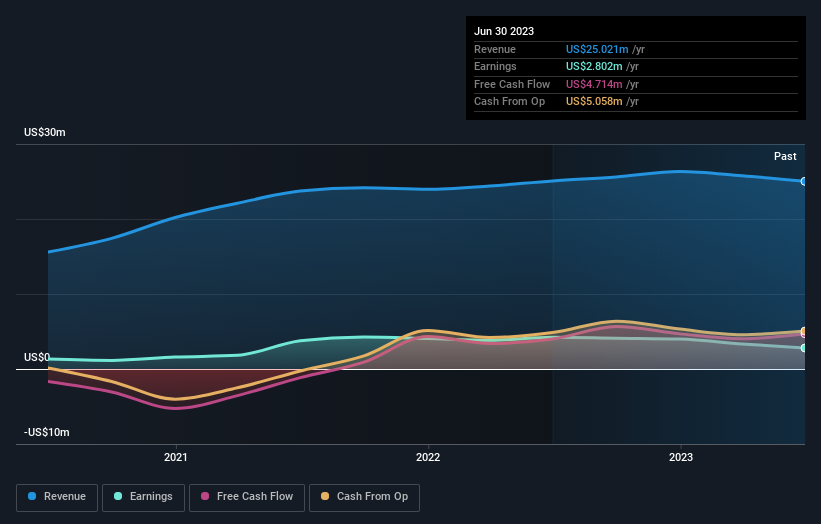Individual investors account for 57% of William Penn Bancorporation's (NASDAQ:WMPN) ownership, while institutions account for 35%
Key Insights
William Penn Bancorporation's significant individual investors ownership suggests that the key decisions are influenced by shareholders from the larger public
40% of the business is held by the top 25 shareholders
If you want to know who really controls William Penn Bancorporation (NASDAQ:WMPN), then you'll have to look at the makeup of its share registry. With 57% stake, individual investors possess the maximum shares in the company. In other words, the group stands to gain the most (or lose the most) from their investment into the company.
Meanwhile, institutions make up 35% of the company’s shareholders. Institutions often own shares in more established companies, while it's not unusual to see insiders own a fair bit of smaller companies.
Let's delve deeper into each type of owner of William Penn Bancorporation, beginning with the chart below.
Check out our latest analysis for William Penn Bancorporation
What Does The Institutional Ownership Tell Us About William Penn Bancorporation?
Many institutions measure their performance against an index that approximates the local market. So they usually pay more attention to companies that are included in major indices.
We can see that William Penn Bancorporation does have institutional investors; and they hold a good portion of the company's stock. This implies the analysts working for those institutions have looked at the stock and they like it. But just like anyone else, they could be wrong. If multiple institutions change their view on a stock at the same time, you could see the share price drop fast. It's therefore worth looking at William Penn Bancorporation's earnings history below. Of course, the future is what really matters.
Hedge funds don't have many shares in William Penn Bancorporation. The company's largest shareholder is William Penn Bank, FSB, ESOP, with ownership of 10%. The Vanguard Group, Inc. is the second largest shareholder owning 5.0% of common stock, and DePrince, Race & Zollo, Inc. holds about 4.6% of the company stock. In addition, we found that Kenneth Stephon, the CEO has 2.4% of the shares allocated to their name.
On studying our ownership data, we found that 25 of the top shareholders collectively own less than 50% of the share register, implying that no single individual has a majority interest.
Researching institutional ownership is a good way to gauge and filter a stock's expected performance. The same can be achieved by studying analyst sentiments. Our information suggests that there isn't any analyst coverage of the stock, so it is probably little known.
Insider Ownership Of William Penn Bancorporation
While the precise definition of an insider can be subjective, almost everyone considers board members to be insiders. Management ultimately answers to the board. However, it is not uncommon for managers to be executive board members, especially if they are a founder or the CEO.
Most consider insider ownership a positive because it can indicate the board is well aligned with other shareholders. However, on some occasions too much power is concentrated within this group.
We can see that insiders own shares in William Penn Bancorporation. In their own names, insiders own US$11m worth of stock in the US$122m company. It is good to see some investment by insiders, but we usually like to see higher insider holdings. It might be worth checking if those insiders have been buying.
General Public Ownership
The general public -- including retail investors -- own 57% of William Penn Bancorporation. This level of ownership gives investors from the wider public some power to sway key policy decisions such as board composition, executive compensation, and the dividend payout ratio.
Next Steps:
It's always worth thinking about the different groups who own shares in a company. But to understand William Penn Bancorporation better, we need to consider many other factors. Be aware that William Penn Bancorporation is showing 1 warning sign in our investment analysis , you should know about...
Of course this may not be the best stock to buy. Therefore, you may wish to see our free collection of interesting prospects boasting favorable financials.
NB: Figures in this article are calculated using data from the last twelve months, which refer to the 12-month period ending on the last date of the month the financial statement is dated. This may not be consistent with full year annual report figures.
Have feedback on this article? Concerned about the content? Get in touch with us directly. Alternatively, email editorial-team (at) simplywallst.com.
This article by Simply Wall St is general in nature. We provide commentary based on historical data and analyst forecasts only using an unbiased methodology and our articles are not intended to be financial advice. It does not constitute a recommendation to buy or sell any stock, and does not take account of your objectives, or your financial situation. We aim to bring you long-term focused analysis driven by fundamental data. Note that our analysis may not factor in the latest price-sensitive company announcements or qualitative material. Simply Wall St has no position in any stocks mentioned.


